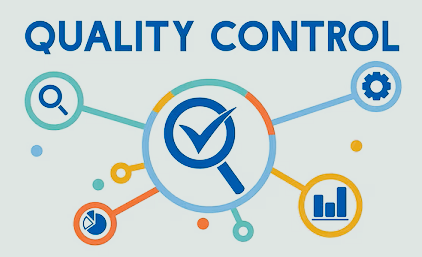Quality control is a critical component of any successful business operation. It ensures that products or services meet predefined standards and adhere to customer expectations. Implementing effective quality control measures is essential for maintaining consistency, reducing defects, and enhancing overall customer satisfaction. In this article, we’ll delve into the key steps and strategies for implementing quality control measures that can help your business thrive.
Understanding Quality Control
Quality control (QC) refers to the systematic processes and procedures used to monitor, evaluate, and maintain the quality of products or services throughout their lifecycle. The primary objective of QC is to identify and rectify deviations from established quality standards. This, in turn, minimizes defects, lowers costs, and enhances customer confidence.
Key Steps to Implement Quality Control Measures
Define Quality Standards:
- Begin by establishing clear and measurable quality standards for your products or services. These standards should be specific, realistic, and aligned with customer expectations.
- Involve relevant stakeholders, including employees, customers, and suppliers, in the process of defining quality standards. Their insights can provide valuable perspectives.
Develop Standard Operating Procedures (SOPs):
- Create detailed SOPs that outline the step-by-step processes for producing or delivering your products or services.
- SOPs should include specifications, guidelines, and quality checkpoints at various stages of production or service delivery.
Training and Education:
- Ensure that your employees are adequately trained and educated on the quality standards and SOPs.
- Ongoing training programs and regular updates are crucial to keep employees informed about evolving standards and best practices.
Establish Quality Control Teams:
- Form dedicated quality control teams or designate individuals responsible for monitoring and enforcing quality standards.
- These teams should have the authority to identify, report, and address deviations promptly.
Implement Inspection and Testing:
- Conduct inspections and testing at key points in the production or service delivery process.
- Use appropriate tools and equipment to detect defects, deviations, or non-conformities.
Data Collection and Analysis:
- Gather data related to quality control, including defect rates, customer complaints, and process variations.
- Analyze this data to identify root causes of quality issues and make data-driven decisions for improvement.
Continuous Improvement:
- Implement a culture of continuous improvement by regularly reviewing quality control processes.
- Encourage employees to suggest improvements and take corrective actions based on data and feedback.
Supplier Quality Control:
- Extend your quality control measures to include suppliers and vendors.
- Establish criteria for supplier selection, performance monitoring, and quality assurance.
Customer Feedback:
- Solicit and listen to customer feedback to gain insights into their expectations and satisfaction levels.
- Use this feedback to drive improvements in your products or services.
Certification and Compliance:
- Depending on your industry, consider obtaining relevant certifications and adhering to regulatory requirements.
- Compliance with industry standards can enhance your credibility and marketability.
Conclusion
Implementing quality control measures is not just about avoiding defects; it’s about consistently delivering products or services that meet or exceed customer expectations. By following the steps outlined in this guide, you can establish a robust quality control framework that not only minimizes errors and defects but also drives continuous improvement and customer loyalty. Remember, quality control is not a one-time effort; it’s an ongoing commitment to excellence that can set your business apart in a competitive market.
Who we are: Funded.com is a platform that is A+ BBB accredited over 10+ years. Access our network of Angel Investors, Venture Capital or Lenders. Let us professionally write your Business Plan.





